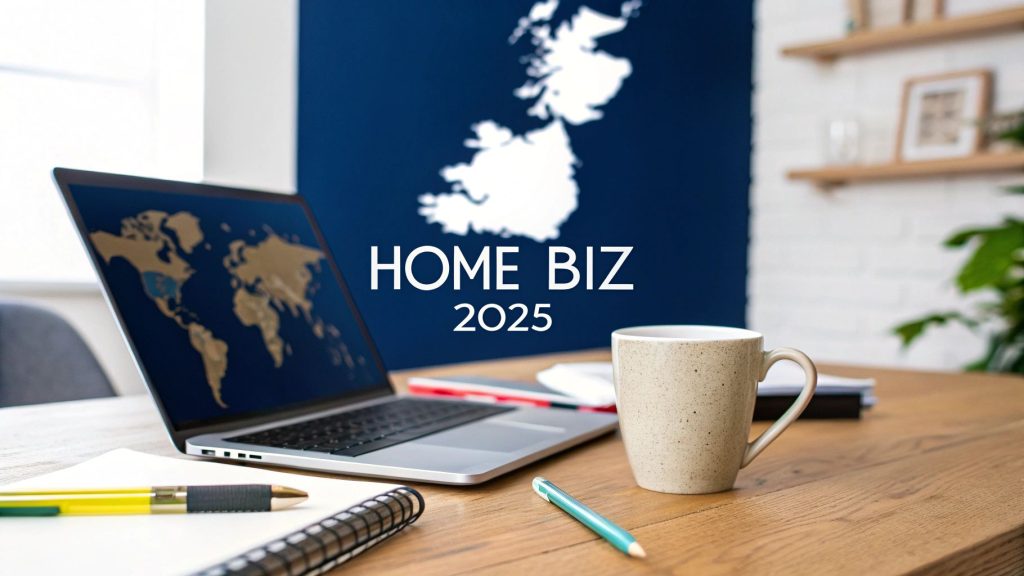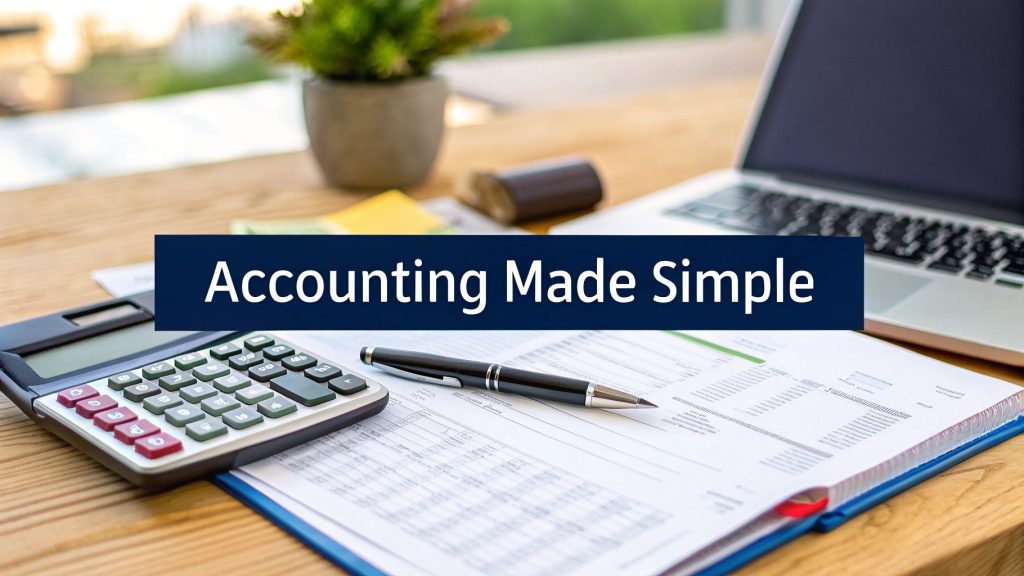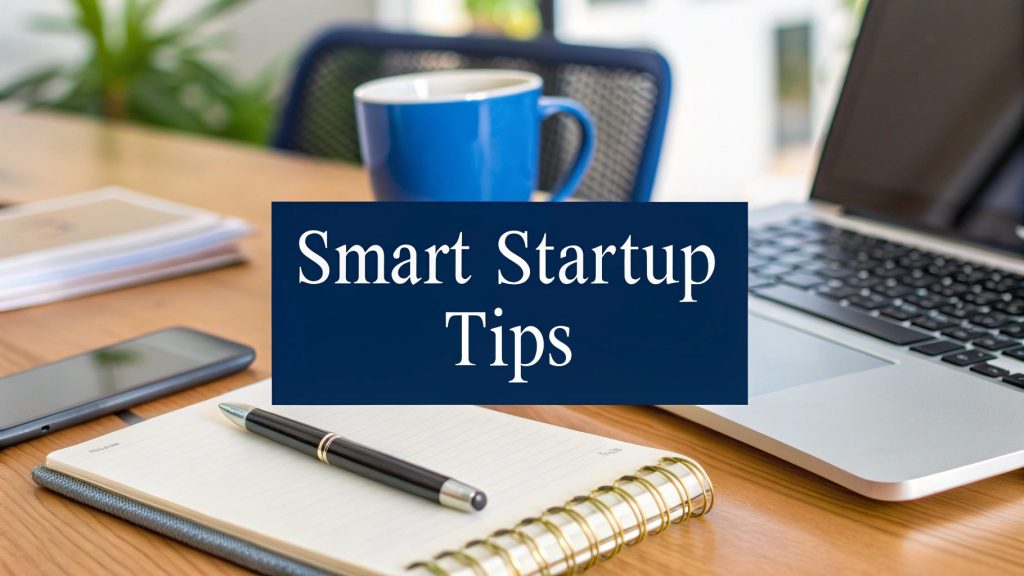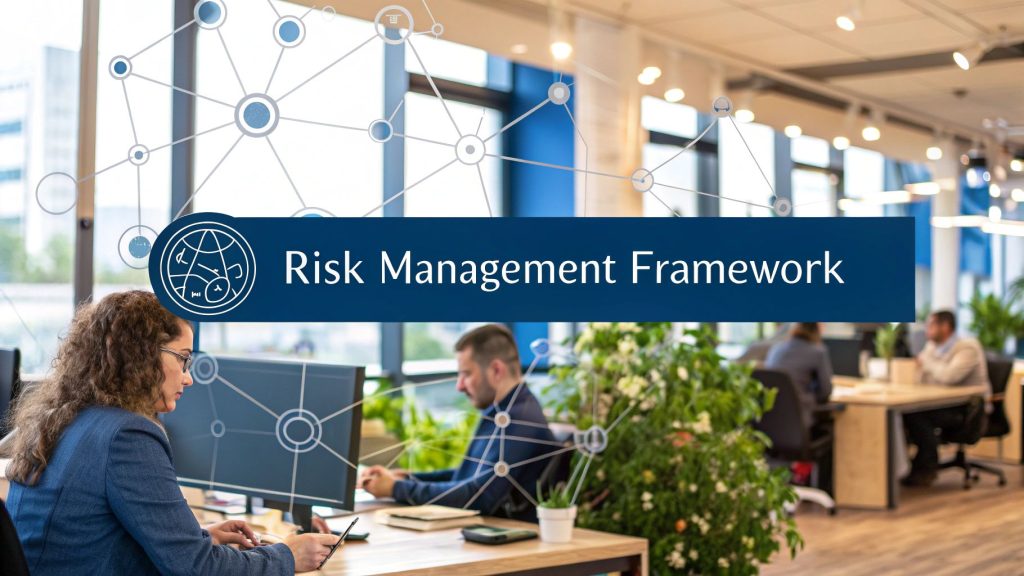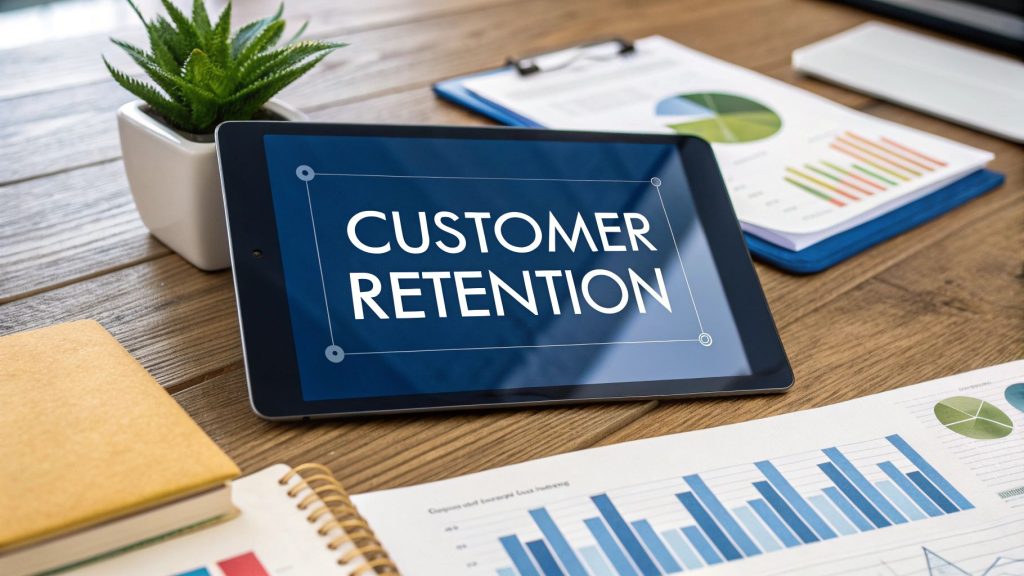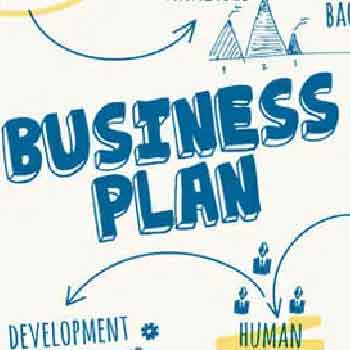12 Best Ways to Advertise Your Business in 2025
12 Best Ways to Advertise Your Business – In a competitive market, having an excellent product or service is only half the battle. To truly succeed, you need to connect with your ideal customers where they already spend their time. But with countless channels and strategies available, identifying the best ways to advertise your business can feel overwhelming, often leading to wasted budgets on ineffective campaigns.
This guide is designed to cut through the noise. We will explore twelve powerful advertising methods tailored for startups, sole traders, and small business directors. Moving beyond generic advice, we will provide practical, actionable steps you can implement immediately to see tangible results.
From the precision targeting of social media advertising and the long-term authority of content marketing to the immediate impact of search engine ads, you will discover strategies that align with your specific goals and financial resources. This article isn’t just a list; it’s a playbook for transforming your advertising from a necessary expense into a powerful, predictable engine for business growth. We’ll provide clear implementation details and practical examples to help you navigate each method successfully and find the right mix for your brand.
1. Master Hyper-Targeted Social Media Advertising
Paid promotional campaigns on platforms like Facebook, Instagram, and LinkedIn represent one of the best ways to advertise your business by connecting directly with your ideal customer. Unlike traditional methods, social media advertising uses powerful algorithms and vast user data to deliver your message with unparalleled precision.
This approach allows you to move beyond basic demographics and target users based on their specific interests, online behaviours, recent life events, and even purchase intent. The key is creating highly relevant ad campaigns that speak directly to a niche audience, making your marketing budget work smarter, not harder.
How to Implement Hyper-Targeting
A local artisan bakery, for example, could target ads on Facebook to users within a 5-mile radius who have shown interest in “organic food,” “sourdough bread,” and follow popular local food bloggers. For a wedding photographer, this could mean targeting Instagram users recently engaged who also follow accounts like “Brides” or “Wedding Ideas Magazine”. This ensures the ad is seen only by the most likely customers.
To get started:
- Define Your Audience Persona: Be specific. Instead of “women aged 25-40,” think “new mothers aged 28-35, living in Manchester, interested in sustainable baby products.”
- Utilise Lookalike Audiences: Once you have a list of existing customers, platforms can find new users who share similar characteristics.
- A/B Test Your Adverts: Test different images, headlines, and calls-to-action on small audience segments to see what resonates before scaling up your spending.
This granular control makes social media advertising a cost-effective and powerful tool for small businesses. For a deeper dive into platform specifics, explore these essential social media marketing tips for small businesses.
2. Develop a High-Value Content Marketing Engine
Content marketing is a strategic approach focused on creating and distributing valuable, relevant content to attract and retain a specific audience. Unlike direct advertising, this method builds trust and authority by educating and informing potential customers, making it one of the best ways to advertise your business for long-term growth.
This strategy involves producing materials like blog posts, ebooks, videos, and case studies that solve your audience’s problems. By consistently providing expertise, you establish your brand as a go-to resource, nurturing leads through the sales funnel without an aggressive sales pitch. This builds a loyal community that sees you as a credible partner.
How to Implement Content Marketing
A B2B software company, for example, could create a detailed whitepaper on “Solving Common Inventory Management Challenges” for warehouse managers. This content directly addresses a key pain point and captures qualified leads when users download it in exchange for their email. A financial advisor could create a blog series titled “A Step-by-Step Guide to First-Time Home Buying” to attract young professionals planning their future.
To get started:
- Address Customer Pain Points: Develop a content calendar focused on answering the most common questions your sales team receives.
- Optimise for Search Intent: Research keywords your audience uses and create content that directly matches what they are looking for.
- Repurpose Your Content: Turn a successful blog post into an infographic, a video tutorial, or a series of social media tips to maximise its reach.
- Include Clear Calls-to-Action (CTAs): Every piece of content should guide the reader on what to do next, whether it’s subscribing to a newsletter or booking a demo.
3. Search Engine Marketing (SEM) / Google Ads
Search Engine Marketing (SEM) puts your business directly in front of customers at the exact moment they are looking for your products or services. By using platforms like Google Ads, you can bid on specific keywords, allowing your adverts to appear at the top of search engine results pages for high-intent users.
This method is one of the best ways to advertise your business because it captures demand that already exists. Rather than creating awareness, you are providing an immediate solution to a customer’s problem, dramatically increasing the likelihood of a click-through and conversion. It’s a powerful tool for driving qualified traffic directly to your website.

How to Implement SEM
For instance, a local plumber in Bristol could bid on the keyword “emergency plumber Bristol” to appear instantly when a homeowner has a burst pipe. This immediate visibility is crucial for time-sensitive services and drives highly motivated leads. Similarly, an online store selling custom pet portraits could run ads targeting keywords like “personalised dog gift” or “cat portrait artist”.
To get started:
- Target Long-Tail Keywords: Instead of broad terms like “shoes,” bid on more specific phrases like “women’s waterproof hiking boots size 6.” These have less competition and higher conversion rates.
- Write Compelling Ad Copy: Your advert must have a clear value proposition. Include keywords, benefits, and a strong call-to-action like “Get a Free Quote Today.”
- Use Negative Keywords: Add terms you don’t want to rank for (e.g., “free,” “jobs,” “cheap”) to prevent wasted ad spend on irrelevant clicks.
- Optimise Your Landing Page: Ensure the page users land on after clicking your ad is relevant, fast-loading, and makes it easy for them to take the next step.
Integrating SEM into a structured campaign is vital, which is why having a clear plan is essential. For help structuring your efforts, explore this free marketing plan template.
4. Harness the Power of Email Marketing
Email marketing is one of the best ways to advertise your business because it offers a direct and personal line of communication with people who have already expressed interest in your brand. By nurturing a list of opted-in subscribers, you can deliver targeted newsletters, promotional offers, and valuable content straight to their inbox, building long-term customer loyalty.
This strategy allows you to segment your audience and send highly relevant messages, from automated welcome series for new subscribers to abandoned cart reminders for e-commerce customers. Unlike social media, you own your email list, giving you a stable and reliable channel to engage prospects and drive repeat business without algorithm changes affecting your reach.
How to Implement Email Marketing
A local gym, for instance, could send a weekly newsletter with workout tips and healthy recipes, a special offer for personal training sessions to members who haven’t visited in a month, and an automated welcome sequence to new sign-ups. An e-commerce bookstore could send personalised recommendations based on a customer’s past purchases or a “back in stock” notification for a book on their wishlist.
To get started:
- Build Your List Organically: Offer a valuable incentive, like a discount or a free guide, in exchange for an email address.
- Segment Your Subscribers: Group contacts based on their purchase history, engagement level, or interests to send more personalised, effective campaigns.
- Craft Compelling Subject Lines: Your subject line is crucial. Make it intriguing and clearly communicate the value inside the email to boost open rates.
This direct-to-consumer approach fosters a strong community and consistently delivers a high return on investment, making it an essential advertising tool. For a platform that excels in this, particularly for e-commerce, consider exploring Klaviyo.
5. Harness the Power of Influencer Marketing
Partnering with trusted voices in your industry is one of the best ways to advertise your business by tapping into established, engaged communities. Influencer marketing leverages the credibility of content creators to introduce your brand to their followers, offering a layer of social proof that traditional advertising often lacks.
This strategy moves beyond simple promotion; it’s about authentic endorsement. When an influencer genuinely aligns with your brand, their recommendation feels like a trusted tip from a friend rather than a corporate advert, driving both awareness and conversions.

How to Implement Influencer Marketing
A sustainable fashion brand, for instance, could partner with micro-influencers known for their ethical lifestyle content. By sending them products to feature in an “outfit of the day” post, the brand gains exposure to a highly relevant and receptive audience. A company selling high-end coffee equipment could collaborate with a popular YouTuber who reviews espresso machines, providing a unit for an in-depth, honest review video.
To get started:
- Prioritise Engagement Over Followers: A micro-influencer with a high engagement rate often provides better value and a more dedicated audience than a mega-influencer with passive followers.
- Build Authentic Relationships: Focus on long-term partnerships rather than one-off posts. This builds deeper trust and more genuine advocacy for your brand.
- Track Your Performance: Use unique discount codes or trackable links for each influencer to measure the direct return on your investment and identify your most effective partners.
6. Harness the Power of Video Marketing
Video marketing has become an indispensable tool for businesses aiming to capture attention and tell compelling stories. It involves creating and distributing video content across various platforms to engage audiences, showcase products, and build brand personality. This dynamic format is one of the best ways to advertise your business because it combines visuals, sound, and narrative to create a memorable and highly shareable experience.
From polished YouTube tutorials to spontaneous TikToks, video allows you to connect with viewers on a deeper emotional level than static text or images. It simplifies complex information, builds trust through authenticity, and drives significant engagement, making it a powerful advertising medium for businesses of all sizes.
How to Implement Video Marketing
Blendtec’s iconic “Will It Blend?” series is a perfect example of effective video marketing. By blending iPhones and other unusual items, they created viral content that was both entertaining and a powerful demonstration of their product’s strength. On a smaller scale, a local estate agent could create short video tours of their properties for Instagram Reels, giving potential buyers a dynamic preview that static photos can’t match.
To get started with video:
- Hook Viewers Immediately: The first three seconds are critical. Start with a compelling question, a surprising visual, or a bold statement to prevent users from scrolling past.
- Optimise for Mobile and Silent Viewing: Most videos are watched on mobile devices, often with the sound off. Use clear, easy-to-read captions and ensure your visuals are effective without audio.
- Include a Clear Call-to-Action (CTA): Tell your viewers what to do next. Whether it’s “subscribe,” “visit our website,” or “shop now,” guide them with a clear CTA in your video or description.
7. Referral and Affiliate Marketing
Harnessing the power of word-of-mouth is one of the oldest yet best ways to advertise your business, and modern referral programmes supercharge this effect. This strategy incentivises existing customers and external partners to promote your products in exchange for rewards, turning your loyal user base into a proactive marketing force.
This approach builds on trust, as a recommendation from a friend or trusted influencer carries more weight than a traditional advertisement. It’s a highly efficient model where you only pay for successful conversions, ensuring a strong return on investment and fostering a community around your brand.
How to Implement Referral Marketing
A classic example is Dropbox, which grew exponentially by offering free storage space to both the referrer and the new user. This created a powerful, frictionless incentive for users to share the service with their network. Similarly, a subscription box service could give customers a £10 credit for every friend who signs up using their unique link, with the new friend also receiving £10 off their first box.
To get started:
- Offer Dual-Sided Incentives: Reward both the person referring and the new customer they bring in. This could be a discount, store credit, or a free product.
- Make Sharing Effortless: Provide a simple, unique referral link or code that is easy for customers to find and share across email and social media.
- Equip Your Affiliates: If you run an affiliate programme, provide partners with high-quality marketing materials like banners, pre-written copy, and product images.
This method not only acquires new customers but also reinforces the loyalty of existing ones, which is a core component of effective customer retention strategies.
8. Pay-Per-Click Display Advertising
Pay-Per-Click (PPC) display campaigns place visually engaging banner ads across a vast network of websites, apps, and platforms, representing one of the best ways to advertise your business to a broad yet relevant audience. Unlike search ads, which capture active intent, display ads excel at building brand awareness and recapturing the attention of previous website visitors.
These ads leverage powerful targeting options based on user demographics, online behaviours, interests, and remarketing data. This allows you to place your brand directly in front of potential customers as they browse their favourite content, keeping your business top-of-mind and encouraging a return visit.
How to Implement PPC Display Advertising
An online furniture retailer could use display advertising to retarget users who viewed a specific sofa. A visual ad featuring that exact sofa would then appear on other websites the user visits, reminding them of their interest and guiding them back to complete the purchase. A travel agency could run display ads on popular travel blogs, targeting users who have recently searched for flights to Spain, showcasing their “Best of Barcelona” holiday package.
To get started:
- Prioritise Retargeting: Focus your initial budget on retargeting campaigns. These audiences have already shown interest and typically deliver a much higher return on investment.
- Create Compelling Visuals: Your ad creative must be eye-catching and clearly communicate your value proposition in seconds. Test different images, colours, and calls-to-action.
- Use Frequency Capping: Prevent ad fatigue by limiting the number of times a single user sees your ad within a specific period. This avoids annoying potential customers and wasting your budget.
9. Local SEO and Business Listings
For businesses serving a specific geographic area, optimising for local search is one of the most effective ways to advertise your business. This strategy focuses on increasing your visibility in local search results on Google, ensuring that nearby customers find you when they need your products or services the most.
It involves managing your online business listings, primarily your Google Business Profile, and building a consistent presence across various online directories. When a potential customer searches for “plumber near me” or “best coffee in Bristol,” a well-optimised local SEO strategy ensures your business appears prominently in the search results and on Google Maps.

How to Implement Local SEO
A local dental practice, for example, can use its Google Business Profile to showcase services, opening hours, patient reviews, and photos of its clinic. This not only improves its ranking for terms like “dentist in Cambridge” but also provides customers with all the information they need to book an appointment directly from the search results. A restaurant could use the Google Posts feature to announce a new seasonal menu or a weekend special, attracting immediate local interest.
To get started:
- Claim and Fully Optimise Your Google Business Profile: This is your most crucial local listing. Add high-quality photos, services, accurate hours, and use the Google Posts feature to share updates.
- Maintain Consistent NAP: Ensure your Name, Address, and Phone number are identical across all online directories and citations. Inconsistencies can confuse search engines.
- Actively Collect and Respond to Reviews: Encourage happy customers to leave reviews and make sure to respond to all feedback, both positive and negative. This builds trust and boosts your local ranking.
This approach transforms online search into direct footfall and enquiries for your business.
10. Leverage Public Relations and Press Releases
Generating earned media coverage is one of the best ways to advertise your business by building powerful brand credibility. Unlike paid ads, public relations (PR) focuses on securing positive mentions from third-party sources like journalists and media outlets, which audiences often perceive as more authentic and trustworthy.
A well-crafted press release or a strong media relationship can land your business in newspapers, trade publications, or popular blogs, reaching a broad audience without a direct advertising spend. The goal is to create a newsworthy story that editors and reporters want to share with their readers.
How to Implement Public Relations
A local tech start-up securing a significant funding round could issue a press release to tech journals and local business news outlets. This not only announces the milestone but also validates the company’s potential through editorial coverage, attracting talent and future investors. A brewery launching a new beer made with locally sourced, unique ingredients could send a press release and samples to local food and drink bloggers, aiming for reviews and feature articles.
To get started:
- Identify a Newsworthy Angle: Focus on genuine news, not just a product promotion. Think company milestones, new research, significant hires, or community initiatives.
- Build Media Relationships: Identify and connect with journalists who cover your industry. Offer them expert insights or exclusive data to become a trusted source.
- Craft a Compelling Press Release: Structure your release with a strong headline, a concise summary, supporting quotes, and essential company information. Distribute it strategically to relevant media contacts.
This approach builds long-term brand equity and authority in your market.
11. Leverage Podcast Advertising
Sponsoring or placing advertisements in podcasts is one of the best ways to advertise your business to a highly engaged and captive audience. Listeners often build strong, trust-based relationships with podcast hosts, making host-read endorsements particularly effective and authentic.
This advertising channel allows you to connect with potential customers during their commutes, workouts, or household chores when they are less distracted. By choosing shows that align with your brand’s niche, you can ensure your message is delivered directly to an audience that is already interested in your industry or subject matter.
How to Implement Podcast Advertising
A fintech startup, for example, could sponsor a popular personal finance podcast. A host-read ad explaining how the startup’s app helped them manage their investments would feel more like a genuine recommendation than a traditional advert, driving higher-quality leads. A meal-kit delivery service could advertise on a podcast for busy working parents, offering a unique discount code like “HEALTHYMEALS25” to track performance.
To get started:
- Identify Aligned Podcasts: Research podcasts whose audience demographics and interests match your ideal customer persona. Look for shows with over 5,000 listeners to achieve a reasonable scale.
- Prioritise Host-Read Adverts: Negotiate for host-read ads where possible. The personal endorsement from a trusted voice carries significant weight and often yields better results.
- Track Your ROI: Use unique promo codes or vanity URLs for each podcast campaign. This allows you to accurately measure which partnerships are driving conversions and optimise your spending accordingly.
This targeted approach makes podcast advertising a powerful tool for building brand awareness and credibility with a dedicated listener base.
12. Event Marketing and Sponsorships
Creating or sponsoring events offers a powerful way to advertise your business by engaging directly with a captive audience. Whether it’s a major industry trade show, a local community fair, or a targeted webinar, event marketing builds tangible relationships and generates high-quality leads through face-to-face or direct virtual interaction.
This hands-on approach cuts through digital noise, allowing you to demonstrate your products, share your expertise, and build brand trust in a memorable, interactive setting. It positions your company not just as a seller, but as an active and valuable member of your industry community, fostering loyalty and creating powerful brand recall.
How to Implement Event Marketing
A B2B software company could sponsor a booth at a major industry conference like Web Summit. Instead of a static display, they could host live, 15-minute demos solving a common industry problem, run a competition to capture lead data, and offer high-quality branded merchandise that attendees will actually use. A local real estate agency could sponsor a community summer fair, hosting a branded tent with free face painting for kids, thereby building goodwill and name recognition with local families.
To get started:
- Choose Relevant Events: Select events where your specific target audience is highly concentrated. It’s better to be a big fish in a small, relevant pond.
- Invest in Engagement: Design an interactive booth or experience. Think beyond brochures and consider live demonstrations, workshops, or gamified elements to attract visitors.
- Train Your Team: Ensure your staff are not just salespeople but engaging brand ambassadors who can answer questions, build rapport, and clearly articulate your value proposition.
- Define a Follow-Up Process: Have a clear, organised system for capturing leads and following up promptly while the memory of the interaction is still fresh.
12 Advertising Methods Compared
| Channel | 🔄 Implementation | ⚡ Resources | ⭐ Effectiveness | 📊 Expected outcomes | 💡 Ideal use cases |
|---|---|---|---|---|---|
| Social Media Advertising | Medium — campaign setup + continuous optimisation | Ad spend (flexible), creative, analytics tools | ⭐⭐⭐⭐ — effective for targeted reach | Rapid traffic, conversions, brand awareness | Product launches, promotions, retargeting |
| Content Marketing | High — strategy, creation, SEO consistency | Time, writing/video skills, SEO tools | ⭐⭐⭐⭐ — strong long-term authority | Gradual organic traffic & qualified leads | Thought leadership, lifecycle nurturing |
| SEM / Google Ads | Medium–high — keyword & bid management | PPC budget, landing pages, expert management | ⭐⭐⭐⭐ — high-intent conversions | Immediate search visibility & conversions | Demand capture, high-intent sales |
| Email Marketing | Medium — list building + automation setup | ESP tools, content, segmentation data | ⭐⭐⭐⭐⭐ — excellent ROI and retention | High repeat purchases and engagement | Retention, promotions, cart recovery |
| Influencer Marketing | Medium — partner selection & management | Influencer fees, creative briefs, tracking | ⭐⭐⭐ — high engagement if authentic | Audience trust, UGC, targeted reach | Niche product launches, social proof |
| Video Marketing | High — production + platform optimisation | Production equipment/software, time | ⭐⭐⭐⭐ — very high engagement & conversions | Strong brand recall and conversion lift | Demos, storytelling, social distribution |
| Referral & Affiliate Marketing | Medium — programme setup and partner ops | Incentives, tracking platform, partner outreach | ⭐⭐⭐ — cost-efficient acquisition | Scalable referrals and high-quality customers | SaaS freemium, e-commerce growth |
| Pay-Per-Click Display Advertising | Medium — creative + programmatic setup | Display budget, creative assets, DSPs | ⭐⭐ — better for awareness/retargeting | Wide reach, low CTR but good remarketing | Brand awareness, retargeting warm users |
| Local SEO & Business Listings | Medium — optimisation + citation management | Time, local listings tools, review processes | ⭐⭐⭐ — strong local intent results | Improved local visibility & footfall | Brick-and-mortar, service-area businesses |
| Public Relations & Press Releases | High — relationships + story development | PR expertise or agency, media lists | ⭐⭐ — credibility boost if picked up | Earned media, backlinks, brand trust | Product/tech launches, corporate milestones |
| Podcast Advertising | Low–medium — ad placement & tracking | Sponsorship budget, creative script, tracking | ⭐⭐⭐ — high engagement in niche audiences | Strong listener trust and conversion potential | Niche targeting, brand awareness, long-form ads |
| Event Marketing & Sponsorships | High — planning, logistics, follow-up | Significant budget, staff, materials | ⭐⭐⭐ — powerful for relationships & leads | Qualified leads, partnerships, brand authority | B2B lead gen, product demos, networking |
Choosing Your Path: Implementing an Advertising Strategy That Works
Navigating the world of advertising can feel overwhelming, but the journey from obscurity to brand recognition is built one strategic step at a time. We’ve explored a dozen powerful methods, from the immediate impact of Google Ads and Social Media Advertising to the long-term authority built through Content Marketing and Local SEO. Each strategy offers a unique set of tools to connect with your target audience, whether through the authentic voice of an influencer, the engaging narrative of video marketing, or the community-building power of event sponsorships. The sheer number of options is not a barrier; it is an opportunity to create a bespoke advertising engine perfectly tuned to your business.
The most critical takeaway is that success doesn’t come from doing everything at once. It comes from a deliberate, data-driven approach. The best ways to advertise your business are not found in a universal playbook but are discovered through experimentation. An e-commerce startup selling artisanal candles might find its initial success through highly visual Instagram campaigns and influencer collaborations, while a local accountancy firm will likely see a greater return from mastering Local SEO and running targeted LinkedIn ads.
Your Action Plan for Effective Advertising
To turn this knowledge into tangible growth, you must move from learning to doing. The key is to start small, measure meticulously, and then scale what proves effective.
Here’s a simple, actionable framework to get you started:
- Select Two Channels: Review the strategies we’ve covered and choose just two that align best with your business model, target audience, and current budget. For example, you might pair a long-term strategy like Content Marketing with a short-term one like Pay-Per-Click (PPC) advertising. This creates a balanced portfolio, building future assets while generating immediate leads.
- Set Clear, Measurable Goals: What does success look like? Don’t just “try” email marketing; aim to achieve a 20% open rate and a 3% click-through rate on your first campaign. For a Google Ads campaign, your goal might be to acquire 50 new leads at a cost-per-acquisition of under £25. Specific metrics are essential for evaluating performance.
- Execute and Track: Launch your campaigns and monitor the data relentlessly. Use tools like Google Analytics, social media insights, and your email platform’s reporting to understand what’s working and what isn’t. Is a particular ad creative outperforming others? Is one blog topic driving significantly more traffic? This data is your guide.
- Analyse and Optimise: After a set period, perhaps one month or one quarter, analyse your results against your initial goals. Double down on the successful elements and either refine or cut what is underperforming. This continuous cycle of testing, learning, and optimising is the secret behind every successful advertising strategy.
Ultimately, mastering advertising is about building a direct line to your ideal customer. It’s about transforming your business from a passive entity into an active participant in the marketplace, driving conversations and creating value. By embracing a methodical and adaptive approach, you will discover the most effective and profitable ways to advertise your business, ensuring sustainable growth for years to come.
12 Best Ways to Advertise Your Business – Ready to build a comprehensive marketing plan with expert guidance and proven templates? Grow My Acorn provides the strategic tools and resources designed to help small businesses like yours implement these advertising strategies effectively. Start your journey to smarter growth today at Grow My Acorn.





